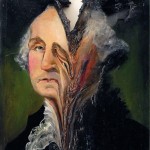 Art and Its Afterlives aims to address the ways in which the work of art continues to resonate after its creation. While much art history takes as its focus the initial facture of the work of art, this one-day symposium explores what happens to early modern art after the moment of its making. How did early modern works continue to be created in their display, preservation, and reception from the moment of their creation on? Papers will examine how art is shaped by its afterlives – whether these collect, curate, cut up, cut out, copy or correct it – and the ways in which art both persists and changes through time as a material object, a field of generative meaning, and a subject of debate and interpretation. Material, technical and social histories as well as theoretical approaches drawn from the discipline of art history and other fields of the humanities are welcome. Accounts from curatorial practice and the field of museology are also encouraged.
Art and Its Afterlives aims to address the ways in which the work of art continues to resonate after its creation. While much art history takes as its focus the initial facture of the work of art, this one-day symposium explores what happens to early modern art after the moment of its making. How did early modern works continue to be created in their display, preservation, and reception from the moment of their creation on? Papers will examine how art is shaped by its afterlives – whether these collect, curate, cut up, cut out, copy or correct it – and the ways in which art both persists and changes through time as a material object, a field of generative meaning, and a subject of debate and interpretation. Material, technical and social histories as well as theoretical approaches drawn from the discipline of art history and other fields of the humanities are welcome. Accounts from curatorial practice and the field of museology are also encouraged.
The question of afterlife is an pertinent topic for art history in general, where the work of art is uniquely tied to a particular assemblage of materials which inevitably change with time, rendering fraught questions of preservation, the presence or possibility of copies, the idea of original state, and how a work of art is staged for a viewer. Less material but no less concrete, the interactions between the work and the viewer, and between the work and the its assumed referent are not stable but open to change. The question of afterlife is particularly relevant for the early modern period, when emergent art markets and cultures of collection allowed not only the circulation of artworks, but also their appropriation and adaptation. Taking as its point of departure Bourdieu’s encouragement to investigate ‘not only the material production of the work but also the production of the value of the work’, this symposium privileges the afterlives of art and the alternative histories they present.
Topics for discussion may include, but are not limited to :
• Histories of collection and display – acquisition and the accrual of value; assignment of category or genre; travel and re-contextualization; political appropriation and/or subversion
• Conservation and technical art history – preservation vs. restoration of past state; hidden layers and the discovery of the underneath; changing material support
• Reception and criticism –boundary between art and reception; development of art historical practice; shifting contexts of viewership and viewer negotiation
• Copy and imitation – changing perceptions of a master’s hand vs. workshop; forging and faking; serial reproduction; changing conceptions of emulation and originality; contemporary uses of early modern works and spaces
• Destruction and embellishment – iconoclasm and the religious image; revolution and vandalism; disassembly and remaking; framing and re-framing
Art and Its Afterlives is the fourth symposium of The Courtauld’s Early Modern Department. We invite proposals from scholars and postgraduates for papers that explore the theme of art and its afterlives in all forms of visual and material culture from the early modern period (c.1560-1848) including painting, sculpture, architecture, decorative arts, performance, print media, graphic arts, and the intersections between them.
Please send proposals of no more than 250 words by 1 July 2012 to
laura.sanders@courtauld.ac.uk and francesca.whitlum-cooper@courtauld.ac.uk.
Further information:
http://www.courtauld.ac.uk/researchforum/events/2012/autumn/nov17_FourthEarlyModernSymposium.shtml
Organized by Laura Sanders and Francesca Whitlum-Cooper (The Courtauld Institute of Art).

Leave a Reply
You must be logged in to post a comment.